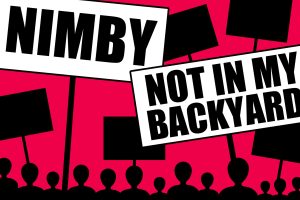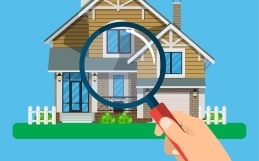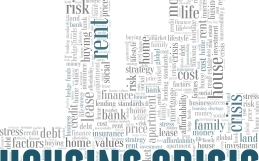 It’s a problem virtually everywhere and, yes, NIMBY exists in Guelph. Let’s talk a little more about NIMBY and how it relates to the housing crisis.
It’s a problem virtually everywhere and, yes, NIMBY exists in Guelph. Let’s talk a little more about NIMBY and how it relates to the housing crisis.
NIMBY is an acronym, standing for Not In My Backyard. NIMBY typically rears its head when a town’s residents oppose a new development project. Opponents speak out and some get very active in their opposition. Why? Because they believe what’s being proposed will have a negative impact on their neighbourhood and/or their quality of life.
How NIMBY Relates to the Housing Crisis
In the context of the housing crisis, NIMBYism most often presents as resistance to new housing construction. While it’s not always the case, the opposition often involves high-density and/or affordable housing.
Forms of resistance vary. Some lobby against zoning changes in order to stall or block a development. Others take issue with specific aspects of the development proposal. And, of course, it will come as no surprise to learn that a huge amount of resistance takes place over social media. Opponents spread their messages, with the hopes of gathering additional support to influence decision makers.
NIMBYism has the potential to deepen the housing crisis because, when successful, NIMBY opposition can delay or even entirely prevent new developments from being built. Now, the law of supply and demand is pretty basic economics. Most understand that preventing new housing supply cannot help our affordability crisis. And, while increasing supply alone will not solve the housing crisis, adding new housing units is most definitely an important piece of the puzzle. By blocking developments, supply remains static, so very little will change with regard to housing availability and affordability.
Affordable Housing and NIMBY
The housing crisis is one of the most talked-about issues in Guelph – and, for that matter, in most cities in Ontario and beyond. Everyone seems to agree that we have a dire shortage of affordable housing.
The construction of affordable housing often relies upon higher-density designs. Here’s where things get sticky. Even the most socially-aware, left-leaning homeowners can get prickly about designs that are going to seem “out of character” with their neighbourhoods. To over-simplify it, the conversation goes something like this:
- Developer: Our plan is to add a high-density development, some or all of which will be set aside for affordable housing initiatives.
- Socially Conscious Homeowner: Great! People are really hurting. We need to do something.
- Developer: There’s a lot around the corner from you that would be ideal for what we’re proposing.
- Socially-Conscious Homeowner: Wait – not here. Great idea. But it’s just not right for this neighbourhood.
Again, I’m over-simplifying. But this really is what NIMBY sounds like, an awful lot of the time. 
In the case of affordable housing, inherent biases come up. “It’s going to decrease all of our property values.” “They’ll let the place go and it’ll look horrible.” “This is going to attract the ‘wrong’ element.” And so forth.
Even social-justice warriors often just don’t want the solutions to these problems in their own backyards. That, by definition, is NIMBYism.
NIMBY’s Impact on Equity and the Environment
When opposition involves a development that has a full or partial focus on affordable (i.e. subsidized, rent-controlled, etc.) units, NIMBYism fails to embrace equity, diversity, and inclusion (EDI.)
If we refuse to remain open-minded about the forms of housing within our own neighbourhoods, we perpetuate a “haves and have nots” system. Neighbourhoods can become homogenous, with high-income earners (or those who have inherited wealth) as the majority of residents. Marginalized, low-income workers are shut out from living in the neighbourhood. This inequality strongly impacts visible minorities, but it also has the potential to prevent seniors, people with disabilities, and many other groups from living with the “haves.”
 As for the environment, we are seeing a fair bit of pushback on sprawl – and rightly so. In the province of Ontario, we’ve seen what urban sprawl can do and many of us are concerned by the Ford government’s pro-sprawl agenda. Farmland and important wildlife habitats will soon be replaced by mega-homes for the wealthy few.
As for the environment, we are seeing a fair bit of pushback on sprawl – and rightly so. In the province of Ontario, we’ve seen what urban sprawl can do and many of us are concerned by the Ford government’s pro-sprawl agenda. Farmland and important wildlife habitats will soon be replaced by mega-homes for the wealthy few.
Here again, this gets sticky. Part of what perpetuates sprawl is NIMBYism. If new developments always need to be “somewhere else,” developers will spread out. Like most cities, we have land within the City that is ripe for development. This includes lots that are sitting vacant, as well as properties that are under-utilized. Developing within the city’s boundaries is absolutely going to change the look and feel of some neighbourhoods, and it will require many of us to confront our own biases and sense of entitlement.
Ways to Address NIMBY in Guelph
So how do we tackle NIMBYism? Well, what we don’t do is what I’m seeing more and more of these days. Leaders and developers call NIMBY out and publicly shame people for their views. All this does is deepen the divide and it literally gets us nowhere.
Look, let’s get real. Under the right set of circumstances, pretty much all of us could have an adverse reaction to a development. Many of the politicians and pro-development business community members are affluent and live in single-detached homes in upscale neighbourhoods. With enough privilege, the kind of projects that tend spark a NIMBY reaction aren’t honestly very likely to impact then on a personal level. It’s easy to shame people for NIMBY when you’re living in a big house surrounded by similar big houses. Just saying!
To address NIMBYism, we need a multi-faceted approach that involves education, collaboration, and policy solutions. Decision-makers and developers have an obligation to listen to residents – not dismiss them. Every resident has the right to raise concerns about a proposed development and – as a part of their role in public service – politicians need to hear those concerns.
Community input in the planning process is vital. Any politician suggesting that it’s time to just start building and bypass the process of community engagement needs to be voted out of office. That is just not how things work – and for good reason. 
The planning process needs to be collaborative. Community members should be involved and encouraged to provide input and feedback. To find common ground and get past NIMBY, we have to listen respectfully to residents – while also educating them on how new housing can benefit the entire community.
When NIMBY Becomes a Dog-Whistle
There is one caveat to conversations around NIMBY and its impact on the housing crisis, and it’s this: sometimes, politicians cry NIMBY in response to virtually any and all objections to a housing development.
As an example, if residents are concerned about a housing development proposal due to things like 1) lack of affordability; 2) lack of accessibility; or 3) environmental impacts – that’s not NIMBY. Those are very legitimate concerns. When politicians or members of the business community try to pin these kinds of concerns on NIMBY, we must call them out for dog-whistling to those with a vested interest in the project.
Dog-whistles are used by politicians because they work. But this is an unfortunate and unfair way to try to shame and silence people when valid concerns are raised about a development. It’s up to us to be savvy enough to recognize what’s truly NIMBY vs. what’s a legitimate concern.
Healthy debate is crucial to good municipal development policies. Let’s recognize and confront NIMBY in Guelph. But let’s not pretend that lobbying for things like affordability, accessibility, and environmental protections is NIMBYism. There’s a lot to talk about – and plenty of common ground to find.







